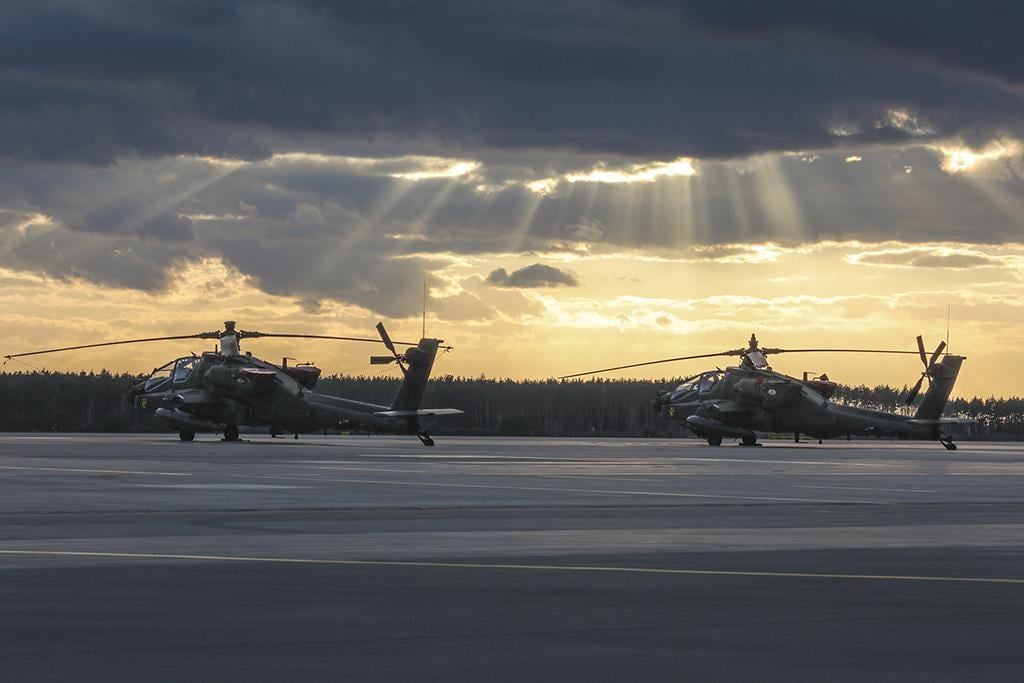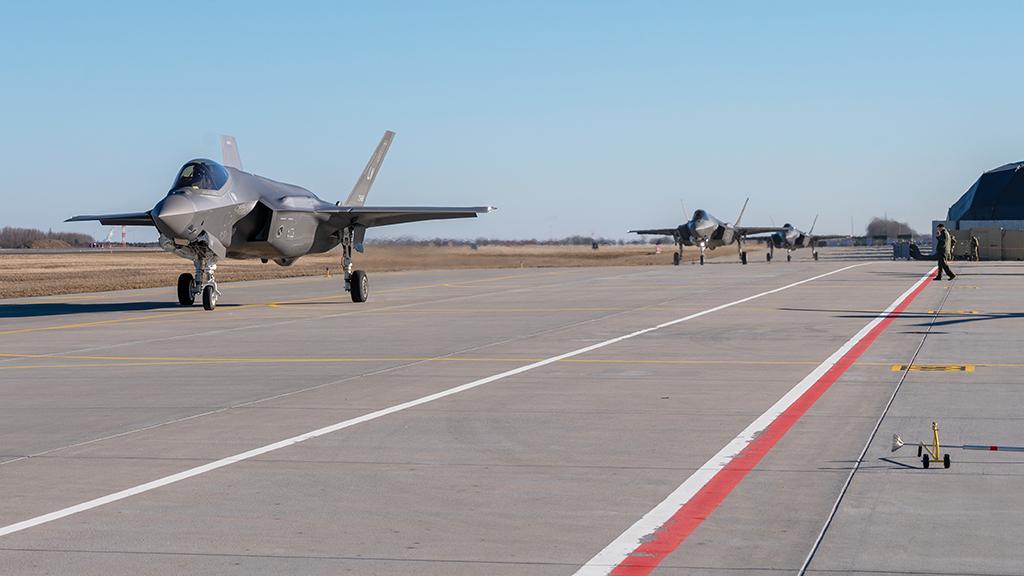
Russia’s invasion of Ukraine in late February prompted a surge of NATO combat aircraft to allied nations on the organization’s eastern front.
Fighter aircraft from a number of nations, supported by refueling tankers of several types, have flown constant combat air patrols to protect NATO, while multinational surveillance aircraft have kept watch on the limited air war that has taken place above Russia’s violent bombardment of Ukraine.
- Deployments include F-35As from multiple nations
- NATO and allies are adamant that a no-fly-zone is not an option
“Over the last weeks, in response to Russia’s attack on Ukraine, we have increased our defensive presence, with over 100 jets at high alert operating from 30 different locations,” NATO Secretary General Jens Stoltenberg says.
Some deployments have been short-notice taskings of some of the newest fighter aircraft across the alliance. For example, the U.S. Air Force deployed six F-35As from its three-month-old squadron at RAF Lakenheath, England, to bases in Estonia and Lithuania. The Royal Netherlands Air Force deployed two of its F-35As to Eastern Europe in late February, although the service had announced it had planned to send the fighters on a separate NATO air policing deployment to Bulgaria in March.
While the deployment of combat aircraft attempts to send a message to Russia not to move beyond operations in Ukraine and into NATO, senior alliance officials have repeatedly and emphatically said that a possible no-fly zone in Ukraine or any operation outside NATO territory is off the table.

“Our forces are not going to Europe to fight in Ukraine, but to defend our NATO allies in the event [Russian President Vladimir] Putin decides to keep moving west,” U.S. President Joe Biden said in his first State of the Union speech on March 1. “For that purpose, we’ve mobilized ground forces, air squadrons and ship deployments to protect NATO countries including Poland, Romania, Latvia, Lithuania and Estonia. As I have made crystal clear, the United States and our allies will defend every inch of territory of NATO countries with the full force of our collective power.”
NATO, in the runup to the invasion and after Russia crossed over Ukraine’s borders, announced deployments to:
- Bulgaria Spanish Eurofighter Typhoons operating at Graf Ignatievo air base.
- Estonia Belgian Air Force F-16s and U.S. Air Force F-35s operating at Amari air base.
- Latvia U.S. Army AH-64 Apaches at Lielvarde air base.
- Lithuania Danish and Polish F-16s and U.S. Air Force F-35As at Siauliai air base.
- Poland U.S. Air Force F-15s, U.S. Army AH-64s and UH-60s at Lask air base, Royal Netherlands Air Force F-35s and Royal Danish Air Force F-16s also deployed to Poland.
- Romania U.S. Air Force F-16s and F-35As at Fetesti air base; Italian and German Eurofighters at Mihail Kogalniceanu air base.
Additionally, many NATO aircraft are flying into the region with tanker support for regular combat air patrols. For example, U.S. Navy F/A-18s from the USS Harry S. Truman in the Mediterranean Sea are flying air policing missions supported by German Air Force A-400M tankers. The UK Royal Air Force has deployed additional Eurofighter Typhoons to RAF Akrotiri, Cyprus, along with long-range flights from RAF Coningsby, England, to patrol airspace in Poland and Romania with support from Voyager tankers. The French Air and Space Force said Rafale fighters and A330 Multi-Role Tanker Transports were flying 3-hr. patrols twice per day from their home bases in France.

The intelligence and surveillance mission has seen high operations with dozens of aircraft watching the border, including NATO and U.S. Air Force E-3 Airborne Warning and Control Systems (AWACS); U.S. Air Force E-8C Joint STARS, RC-135 Rivet Joints and RQ-4 Global Hawks; and the U.S. Army’s Artemis surveillance jet, among others. NATO AWACS are flying into the region from multiple bases, including in Belgium, Germany and Turkey. Crews said the mission is largely similar to what they have regularly flown—monitoring NATO’s eastern front—although the pace has dramatically increased.
“Our radar has a range that’s over 400 km [250 mi.], so it really depends on where we are orbiting as far as how far into any country we can see,” says Maj. Dan Reinhardt, the tactical director for NATO’s Airborne Early Warning and Control Force. “But we can see far enough into both [Belarus and Russia] that we can protect our NATO partners, and they will not be surprised by anything that’s flying in their vicinity.”





